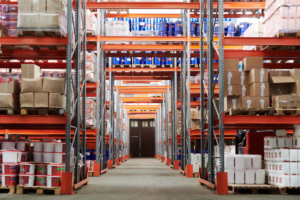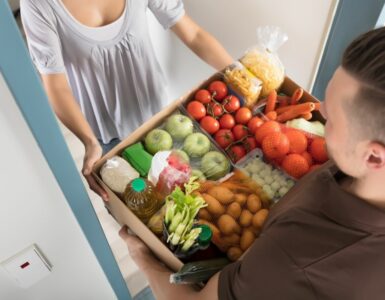It is no secret that the online grocery delivery industry is going through its biggest boom ever, so much so that it is showing a 300 or 400% growth per year. However, one quote that many huge entrepreneurs usually share is that massive growth can kill a business, and this is true even for something as simple looking as grocery deliveries. It might look basic but there are several elements that need to be addressed and well managed like technology, customer acquisition, costs, logistic issues and more.
Despite its enormous growth, and also due to it, the online grocery delivery industry is facing some huge hurdles and challenges that are now arising and that we will be tackling today.
The ever-changing tax system
Taxes are a common pain for everyone, and I mean everyone (aside from tax evaders). We all have to pay them and companies change their prices around to accommodate their tax burden as well. Obviously, companies would not burden losses just to keep their prices unchanged. So, taxes usually are the pivotal element that makes the prices of our products fluctuate.
For example, gas is a pretty cheap resource. What makes it so expensive is the amount of taxes that governments and other entities enforce on it. For example, in Portugal, 70% of what consumers pay for gas goes towards taxes. If not for those, the gas would be pretty insanely cheap.
Lack of interest in technologies
Even though the online industry overall continues to grow at light speed, there is still some resistance when it comes to transitioning between physical services to online. Older demographics, like 45 plus, still prefer to carry on shopping in-person rather than ordering their products. Only a small percentage, around 15 to 20% is adhering to grocery deliveries.
The abovementioned resistance is not only relevant to this industry but rather technology as a whole. Surprisingly, many people remain stuck in their old ways and refuse to adapt to the marvelous tools we have at our disposal now.
Inventory management
Massive consumer goods companies do not really feel this struggle because they are able to push out thousands or millions of products on a daily basis. They have the infrastructure, logistics, planning, resources and teams to meet this kind of demand.
However, smaller companies can really meet their demise on this front. Dealing with product fulfillment, expiration dates, price adjustments, quantity can overwhelm smaller retailers, resulting in two major issues. One, the overstock meaning that they invest more money than they should or can on keeping their inventory stocked up. Two, products begin to spoil since not everything is sold in the same quantities or has the same demand all year round. It is still possible with proper and careful planning though.
Fresh products
 Another complicated issue regarding online grocery deliveries. Fresh products are a pain to deliver while they are still fresh, duh! Again, the big guys have their chain of distribution already ready to deal with this, but smaller companies struggle even more here. Also, the rise of farmers’ markets and green awareness is making people more conscious about the fresh products that they buy, which is also a challenge for delivery services.
Another complicated issue regarding online grocery deliveries. Fresh products are a pain to deliver while they are still fresh, duh! Again, the big guys have their chain of distribution already ready to deal with this, but smaller companies struggle even more here. Also, the rise of farmers’ markets and green awareness is making people more conscious about the fresh products that they buy, which is also a challenge for delivery services.
Customer reviews
The biggest fear of all businesses nowadays – customer reviews. Ever since Google implemented this feature, all kinds of companies really sweat to please their consumers. Nevertheless, someone is bound to have a bad experience from time to time, leading to negative reviews.
When businesses have a ton of reviews, they can easily balance it out but when new companies start off with a bad grade, it can quickly kill their revenue. This is even more relevant in online services since customers usually look for information before trying web services and/or apps.
User experience
What makes or breaks any online service or app is the user experience. People choose their favorite supermarket based on their shopping experience, and the same applies to their online experience. If the customer can’t find the products they are looking for or if the interface is full of bugs or too convoluted, people will instantly leave it and won’t return anytime soon.
The shopping process needs to be as clean and swift as if the consumer was in the physical space.
Final thoughts
We, as consumers, are becoming more and more spoiled and nitpicky about the services that we use. The online grocery delivery industry might be on an exponential rise, but if they do not overcome these new challenges, people will surely return to what they know – in-person shopping in their favorite supermarket.










